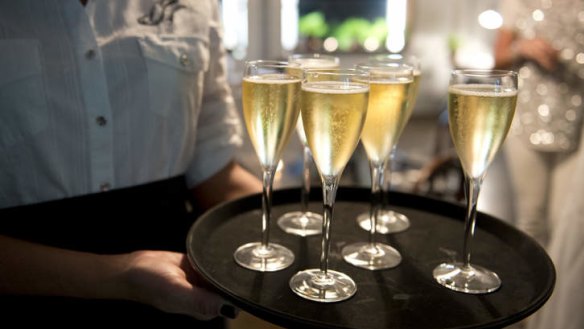Champagne region facing crisis
The famous tipple is experiencing the moment of truth and, for its birthplace, it's a case of adapt or fizzle out.

The Champagne region is facing a crisis. It must change radically to safeguard its future, according the communications director of the Comite Champagne, Thibaut Le Mailloux.
Although it has grown substantially in the past 50 years, Champagne cannot continue to compete in terms of volume.
Le Mailloux, addressing a group of Australian champagne lovers in Epernay recently, said the area of vines had increased on average 3 per cent a year, from about 12,000 hectares in the 1950s to the present 33,573 hectares, but it could not continue that growth, otherwise the vineyards would extend to the Languedoc, he joked.
Global shipments of champagne have grown from 33.4 million bottles in 1950 to 304 million bottles in 2013. More than half the sales are in France, and Australia is the sixth-largest export destination, but sales have been flat for some time, and in France they have fallen.
In 2008, it was decided to include another 40 villages in the region, equating to between 2000 and 5000 hectares of extra land. This attracted criticism, although the land has always been considered part of Champagne, Le Mailloux says.
At the time of the French Revolution in the late 1780s, Champagne covered 65,000 hectares. By the arrival of phylloxera - the pest that devastated France's vineyards in the late 19th century - there were still 50,000 hectares in Champagne.
''The future cannot be the same as the past. A new model must be found. We have ended our cycle with the current model.
''Three centuries ago, champagne was the only sparkling wine, but a century ago, many other countries began producing sparkling wine.''
Champagne could continue to increase the size of its vineyard area, but other countries were going to be bigger competitors, he said.
''Italy has planted a lot of hectares for sparkling wine over the last two decades. In China, they plant hundreds of hectares in one hit. If we add another hectare to Champagne, it's not going to make any difference. The costs of labour, taxes, etc, are all increasing.
''We have to increase the quality and increase the technical gap between Champagne and other regions.''
To that end, 50 per cent of the Comite's budget is spent on technical research. Its strategy is two-pronged: to produce better wine, and to teach people about Champagne.
Countries such as India and China provided hope for growth, because the sales at present are still ''nothing compared with the size of their populations''.
Le Mailloux emphasised that discounting was the great enemy. ''Champagne selling for €9.99 [$14.30] in [French] hypermarkets is downgrading the value of champagne. It is a waste of the raw materials that could have been used better in a higher-quality product. The hypermarkets are conspiring to keep prices down, by paying for production and packaging costs.''
At the same time, Champagne needed to be able to react more quickly to global crises, because these crises were happening more quickly, more violently and unexpectedly, and having major effects on the market.
Le Mailloux cites the Chinese crisis of last year, which caused Bordeaux to ''crash'', losing most of its Chinese market. He showed a graph of champagne sales that depicted the effects of the Wall Street crash, the Gulf wars, the millennium effect and finally the global financial crisis in 2008. Champagne was also hurt by negative publicity over pesticides, as were other agricultural crops, but Champagne had reduced its pesticide use by 50 per cent in recent years, partly through the use of insect pheromones among vines, known locally by the charming title of ''le confusion sexuel''.
Sustainable viticulture has been front of mind for some years, first, with the manifesto of ''lutte raisonnee'' or the ''sensible fight'' against natural threats to the grapevine.
Latterly, the Comite has published a practical technical handbook ''to encourage respect for the environment''.
Le Mailloux said in 2003 that Champagne was the first French region to assess its carbon footprint, and the use of lighter bottles was encouraged. Environmental measures extended to replacing steel walls in vineyards with traditional stone walls and planting hedgerows.
Champagne has applied for a UNESCO World Heritage listing, which it hopes will be announced next June. The application, which has been gestating for 10 years, focuses on three aspects of the region: the vineyards, the wineries and their buildings, and underground wine cellars.
Champagne, as part of its refocusing on quality instead of volume, had to adopt a luxury strategy, Le Mailloux says.
''Champagne is not a fast-moving consumer good [in marketing jargon]. We are not injecting gas into a wine [a reference to cheap carbonated fizzy wines].
''In the future, not everyone will be able to have a bottle of champagne. We need consumers to know why Champagne is better and different. Leadership means being there first: not being arrogant, but acknowledging our competitors. We don't have an action plan yet, but it's in train.''
Thibault Le Mailloux was speaking at a reception at the Comite Champagne headquarters in Epernay for the Vin de Champagne Award winners' 40th-anniversary tour.
